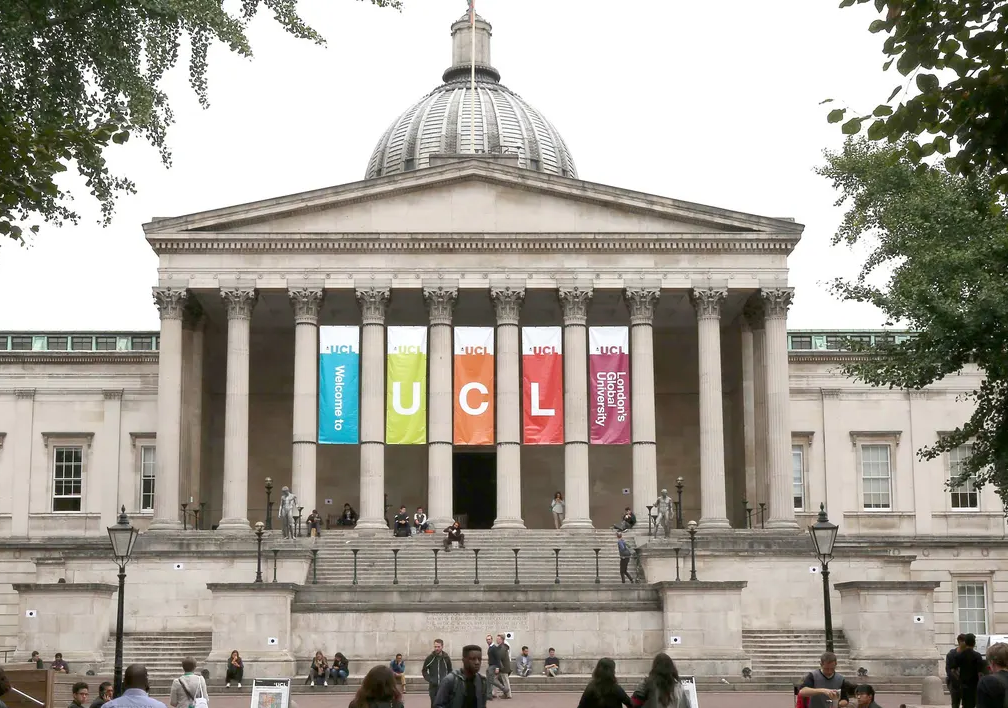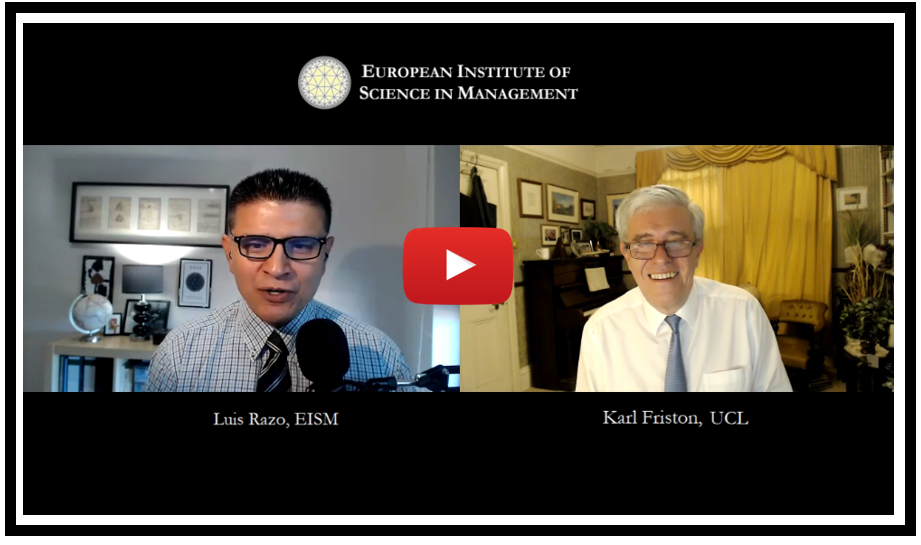
Karl Friston is a theoretical neuroscientist and authority on brain imaging. He invented statistical parametric mapping (SPM), voxel-based morphometry (VBM) and dynamic causal modelling (DCM). These contributions were motivated by schizophrenia research and theoretical studies of value-learning – formulated as the dysconnection hypothesis of schizophrenia. His main contribution to theoretical neurobiology is a free-energy principle for action and perception (active inference). Among his many accolades, Friston was awarded the Minerva Golden Brain Award and was elected a Fellow of the Royal Society in 2006. In 2016 he recieved the Charles Branch Award for unparalleled breakthroughs in Brain Research and the Glass Brain Award – a lifetime achievement award in the field of human brain mapping. He holds Honorary Doctorates from the universities of York, Zurich, Liège and Radboud University.
In this initial conversation, Dr. Friston talks to Luis Razo Bravo, the executive director of EISM, about the “free energy principle” and Markov blankets, and about the symmetries that exist between these and the so-called “holographic principle” in string theory. The exchange includes an attempt to connect these ideas to artificial intelligence and the social sciences.
* The following text has been selected from the full interview, which may be viewed below.

Can you use a drop of ink or perhaps a balloon to talk about the free energy principle and Markov blankets?
It’s nice that you introduced Mike Levin. Mike and I and a common friend, Chris fields did a podcast a few weeks ago and we were asked at the end, you know, why we’re doing all this and Chris said, “We want to be able to say that all our theories are theories or hypotheses of physics, biology, and psychology, and it’s all the same thing. And i think that’s, you know, that reiterates very much your point that we’re talking about science here. So, and it could be the science from the perspective of a physicist or a psychologist or an anthropologist or an ethologist. It doesn’t matter. It should all um subscribe and um be derivable from first principles. So what are those first principles? From the perspective of the balloon, um, I would submit, um, they all center on the notion of every thing, or more simply, what is a thing? So we’re talking about a scientific definition of “thingness”. Everything that you need to know about the free energy principle inherits from the definition of a thing, and in that sort of tongue-in-cheek way some people call it a “theory of every thing”, but there’s a space between the “every” and the “thing” because it’s a theory of things. And those things can be communities, they can be institutions, they can be cells, uh, they can be molecules. What do they have in common? Well, that they have characteristic states that can be individuated from the rest of the universe…
So the notion is here simply by defining “thingness” in terms of this separability, or individu-ablility, in terms of the characteristic states that a thing might have, then you necessarily have to appeal to a Markov blanket and the Markov blanket, from the point of view of the balloon, say, would be the surface of the balloon. So the balloon has a surface, and it has an interior, and then there’s a rest of the universe. So the “balloonness” itself is defined by the fact that there are characteristic states of the Markov blanket, the surface of the balloon, and the interior, the internal states, interior to that balloon. They’re, um, characterized by a certain pressure of gases relative to the, uh, the pressure of gases on the exterior. And in virtue of the that separation, um, one can then ask, um, what are the statistical implications of the inside of the balloon being statistically separable or identifiable given the surface of the balloon, given the Markov blanket relative to the rest of the world.
So the Markov blanket plays here the role that if you were doing 20th century physics, equilibrium physics, it plays the role of the heat bath, the heat reservoir. If you were a biologist studying intracellular mechanisms, it would play the role of the the cell surface, for example. If you’re a neurobiologist studying the brain it would be all the states that interface or allow a two-way exchange between the brain and the sensorium or the outside world.
So is there some sense in which a Markov blanket surrounds a human being?
Yes, I mean almost stipulatively so, um, so if you commit to the notion that a thing is just, um, a partition of some states that has, uh, into blanket states and internal and external states, with respect to the blanket states, then yes, typically, anything that you can articulate or describe as having characteristic states has to have a Markov blanket. They’re not always so obvious, but by definition, if you commit or subscribe to that definition, then then it must include, uh, not only your body but your, uh, your family, your culture, your town, anything that has some characteristic states that can be individuated from the rest of the universe must, at some statistical level, have this, uh, have this Markov blanket partition.

Is there a connection, or have you made a connection, between string theory your work in neuroscience?
That’s a wonderful question and I have to confess I haven’t but I have got friends who have. So, by coincidence, Mike Levin and Chris Fields, who we were talking about earlier, the three of us, including a gentleman called Jim James, um Glazebrook, have literally within the past few weeks written a paper making exactly that point — that the holographic screen, from the point of view we frame it, um, more from the point of view of quantum information theory, uh, and uh, make the point that everything you need to know is on a holographic screen, which plays the role now of the Markov blanket. Um, yeah, and I’m imagining where you want to take this, of course, because if you can imagine sort of two systems, the observed and the observer, each with the Markov blanket and they share the Markov blanket, then there will be not only the kind of symmetry that you were very referring to, a very elemental sort, but also a dynamical symmetry and synchronization because they share the same holographic screen, provided they have the same quantum frames of reference or fields of reference. Um so, that’s a very exciting, from my perspective, insight, um that people like Chris and Jim and Mike have brought to the table. It’s particularly exciting because, of course, their take on, uh, quantum information theory is that it is just an information theoretic, um, treatment of Lagrangeans or whatever, you know, however you want to articulate the, uh, the probability theory. But, crucially, it is scale-free so they’re not [only] talking about the quantum physics of the very very small.
Can you talk about how your work is connected to um artificial intelligence and do you think that it could be applied to improve political theory or voting theory?
Yes, I do, in answer to the second question. Uh, I’m not claiming that I will be in a position to do that, but there is certainly growing interest in using the mechanics and the calculus of inference and coupling between things such as articulators, Markov blankets in, um, a societal governance.

Um, there’s even questions being posed to the free energy principle and its corollary in behavioral science, which is active inference by economics. You know, I’m thinking here of things like the “market mind hypothesis”, so moving away from a behavioral economics and towards a 21st century cognitive economics, where the rules of belief updating, uh, inherit from exactly the Bayesian mechanics and the physics that we’ve been talking about. So I think it’s a great opportunity.


